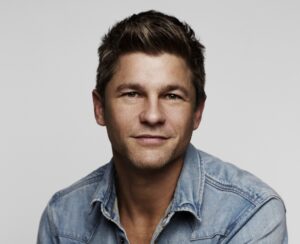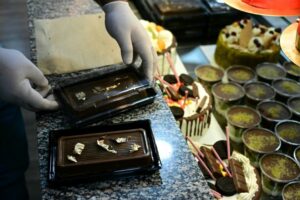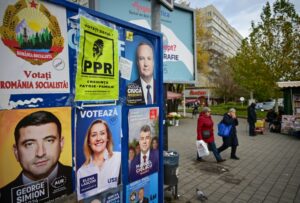Hezbollah: powerful Lebanese armed group with regional role

A picture of Hezbollah leader Hassan Nasrallah reads in Farsi, ‘Hezbollah is alive’, in northern Tehran before the Lebanese movement confirmed his death, which Israel said occurred in a strike on Beirut – Copyright AFP PRAKASH MATHEMA
Lebanon’s Hezbollah movement has been a powerful domestic and regional force, politically and militarily, but the group’s confirmation on Saturday of its leader’s killing marks an unprecedented blow.
Financed and armed by Iran, Hezbollah is the most prominent actor in the Axis of Resistance — regional pro-Tehran armed groups opposed to Israel. They also include Palestinian militants Hamas, Iraqi movements and Yemen’s Huthi rebels.
Since the day after Hamas’s October 7 attack on Israel that triggered war in the Gaza Strip, Hezbollah launched cross-border rocket attacks from Lebanon seeking to tie up Israeli military resources in what it calls “support” for Hamas.
These exchanges escalated over the past week, and on Monday Israeli air raids killed more than 550 people, Lebanon’s health ministry said, in the deadliest day of violence since Lebanon’s 1975-90 civil war.
The raids targeted Hezbollah strongholds in southern Beirut, the south of Lebanon, and in Lebanon’s eastern Bekaa area.
The air assault followed pager and walkie-talkie blasts that targeted operatives of Hezbollah, which blamed Israel, killing almost 40 people and wounding nearly 3,000.
Since July Israel has also killed several top Hezbollah commanders in strikes on south Beirut. These included Fuad Shukr, a key adviser to Nasrallah, and Ibrahim Aqil, head of Hezbollah’s elite Radwan Force.
On Saturday Israel’s military said it had killed Nasrallah in an air strike on Beirut’s southern suburbs, and the movement later confirmed his death.
AFP details Hezbollah’s influence here:
– War in 2006 –
Hezbollah, whose name means “Party of God” in Arabic, was founded during the Lebanese civil war after Israel besieged the capital Beirut in 1982. The group has since become a powerful domestic political player.
Created at the initiative of Iran’s Islamic Revolutionary Guard Corps, the Shiite Muslim movement gained its moniker as “the Resistance” by fighting Israeli troops who occupied southern Lebanon until 2000.
Israel and Hezbollah fought a month-long war in July-August 2006 that killed about 1,200 people in Lebanon, mostly civilians, and 160 in Israel, mostly soldiers, after the group kidnapped two Israeli troops in a cross-border raid.
United Nations Security Council Resolution 1701 ended that conflict and called for the Lebanese army and United Nations peacekeepers to be the only armed forces deployed in south Lebanon.
But Hezbollah holds sway in the area, enjoying broad support and where experts say it likely has a network of underground tunnels.
On August 16, the group released a video showing what appeared to be underground tunnels and large missile launchers, without revealing their location.
The group also has a strong presence in the Bekaa valley near Syria.
Hezbollah has bolstered its powerful arsenal, including with guided missiles, and says it can count on more than 100,000 fighters, though analysts have cited figures of around 50,000.
Nasrallah was elected secretary-general in 1992 after Israel assassinated his predecessor. He rarely appeared in public.
– Regional, domestic influence –
Hezbollah is a major actor in the Middle East, where it has supported and trained Iran-backed groups in Iraq and Huthi rebels in Yemen. The Huthis since October have claimed attacks on Israel and what they say are Israeli-linked shipping interests in the Red Sea area.
Hezbollah is also present in Syria, where many of its members have fought in support of President Bashar al-Assad in his country’s civil war, with Damascus also an ally of Tehran.
Domestically, Hezbollah is the only Lebanese faction to have retained its weapons after the country’s civil war, doing so in the name of “resistance” against Israel.
It is now an important political player, though detractors have accused it of being a “state within a state”.
Political deadlock between Hezbollah allies and their adversaries since late 2022 has prevented the election of a new president, leaving Lebanon essentially leaderless during a years-long economic meltdown.
– Services –
Founded in the Bekaa Valley, Hezbollah has become predominant in all Shiite Muslim areas of Lebanon. Its religious and financial institutions are based in Beirut’s southern suburbs.
The movement runs an extensive social services network, complete with schools, hospitals, emergency responders and a wide range of charitable organisations serving its supporters.
Its trademark yellow flags and huge portraits of the bespectacled, bushy-bearded Nasrallah adorn areas of the country where the movement is popular.
The United States has considered Hezbollah a “terrorist” organisation for years. The European Union applies the classification to the group’s armed wing.
A predecessor of Hezbollah claimed the 1983 US embassy bombing in Beirut that killed 63 people, and double-bombings that killed more than 200 US Marines as well as 58 French soldiers the same year.
In 2022, a UN-backed court sentenced two Hezbollah members in absentia to life imprisonment for a Beirut bombing in 2005 that killed Lebanon’s former prime minister Rafic Hariri.
Hezbollah: powerful Lebanese armed group with regional role
#Hezbollah #powerful #Lebanese #armed #group #regional #role





